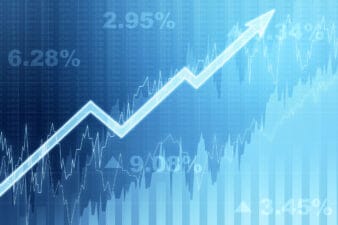If you just started investing, you should aim to avoid these mistakes. Don’t take on too much or too little risk. Build an emergency fund before you start investing. Talk to an insurance agent to see what insurance you need to protect you, your family, and your wealth. When you have big changes in your life, review your insurance coverage.
Taking on too little risk
Some Canadians refuse to take risk and invest in fixed-income investments like GICs. Currently, the best GIC interest rate is 4.6%. Let’s say John invests $100,000 for a 4.6% interest rate. He’d earn $4,600 of interest income and pay an income tax of $1872.2 in 2022 because he is a B.C. resident and expects to earn taxable income of about $130,000 this year. So, his take-home income from the investment would be $2,727.80 for the year. Storing money in GICs is risky in the sense that it reduces your purchasing power when inflation is high, which is what we’re experiencing now.
If he instead invested in solid dividend stocks, he could get long-term returns of about 10% per year. Let’s say he does earn 10% on a $100,000 portfolio from 4% eligible dividends and 6% realized capital appreciation this year. The $4,000 dividend would be taxed $755.20 and the $6,000 capital gains would be taxed $1,221 in a taxable account for total taxes of $1,976.20. His take-home income from the investment would be $8,023.80.
Taking on too much risk
Some Canadians are at the other end of the spectrum than folks who store money in GICs. They aim for outsized returns of more than 20% each year on their investments, which may result in taking excessive risk.
For example, although some growth stocks delivered incredible returns temporarily, many peaked in 2021 and sold off substantially when interest rates started rising. Many of these high-growth stocks may never recover to their peak levels.
New investors should keep in mind that the earlier they start investing, the lower risk they can take to build wealth for the long haul.
Investing money you need in the short term
Don’t invest the money you need within one year in stocks. It’s best to have an investment horizon of at least five years when investing. Otherwise, you might have to take capital losses and lose money when you’re forced to sell stocks at the wrong time.
Not having an emergency fund
You want to build an emergency fund before you start investing. This way, if something comes up unexpectedly, such as your furnace needing to be replaced, or maybe you get into a little car accident and your car needs to be fixed, you can draw from your emergency fund without having to touch your long-term investments. The rule of thumb is to have a minimum of three to six months of living expenses in an emergency fund that’s liquid, such as in a high-interest savings account.
Not having sufficient insurance
Did you know that without the right insurance or sufficient insurance, your wealth could be wiped out with the blink of an eye?
John drives a lot for work, but he only bought $200,000 third-party liability insurance for his auto insurance. If he ended up hurting someone, and he was found to be at fault, whether the person dies or not, John’s financial loss could be devastating. If he had to pay $1,000,000, he would need to cough up $800,000 because he only had coverage of $200,000.
Depending on the kind of assets you have and which life stage you’re at, you would need different types of insurance coverage. For example, most people would want disability insurance because the percentage of getting disabled for longer than three months is high — 58% in the lifetime of a 25-year-old.
If you own a home, you would need to get home insurance that, at a minimum, covers fire and water damages. If you have a young family and you’re the breadwinner, you might want to get life insurance. Then there’s also long-term care and critical illness insurance. Talk to an insurance agent to get insurance that fits your need.








